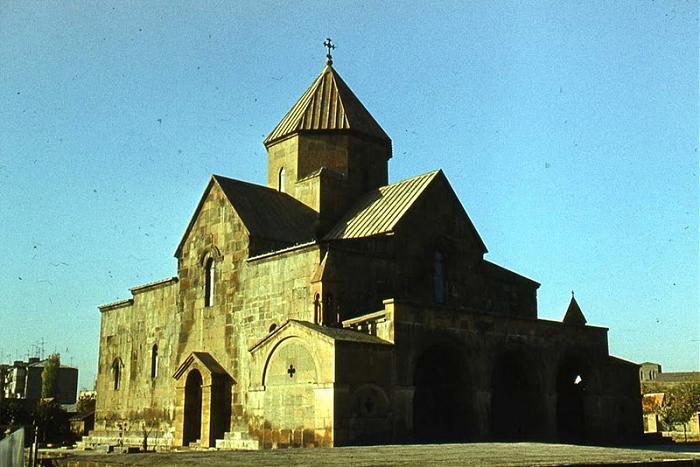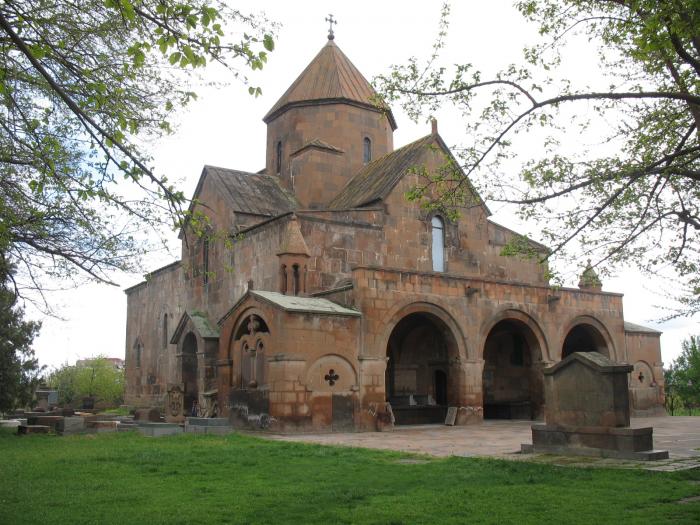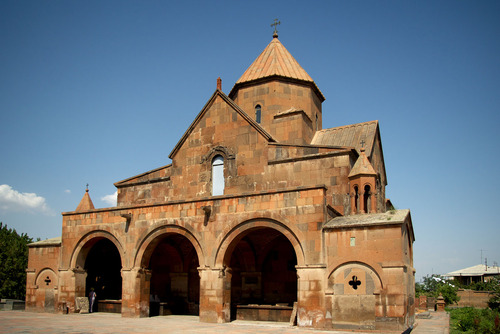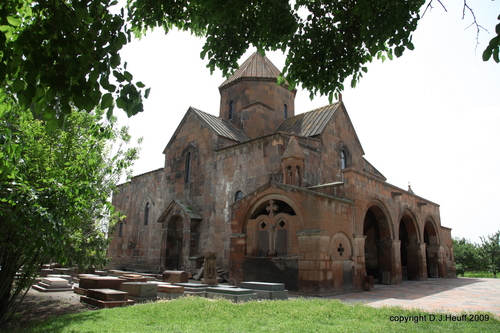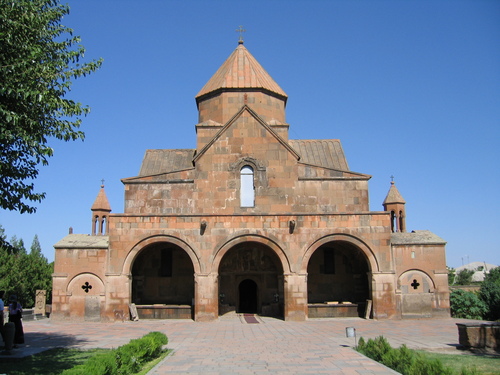The Church of Saint Gayane is a 7th-century Armenian church in Vagharshapat (Etchmiadzin), the religious center of Armenia. It is located within walking distance from the Etchmiadzin Cathedral of 301. St. Gayane was built by Catholicos Ezra I in the year 630. Its design has remained unchanged despite partial renovations of the dome and some ceilings in 1652.
Gayane was the name of an abbess who was martyred with other nuns by Tiridates III of Armenia in the year 301, and subsequently made a saint of the Armenian Apostolic Church.
In 2000, Saint Gayane Church was listed in the UNESCO World Heritage Sites along with historical churches of Vagharshapat.
History
Saint Gayane Church sits on the site where the aforementioned saint was martyred during the time of the conversion of Armenia to Christianity in the year 301 AD. The fifth century Armenian historian Agathangelos wrote that the young and beautiful Hripsime who at the time was a Christian nun in Rome, was to be forcefully married to the Roman emperor Diocletian. She and the abbess Gayane among other nuns fled the tyrant emperor and left to Armenia. The pagan Armenian King Trdat received a letter from Diocletian in which he described her beauty. Trdat discovered where the nuns were hiding, and fell in love with Hripsime and later Gayane. After her refusal of his advances, Hripsime was tortured and martyred at the location of Saint Hripsime Church, while Gayane was tortured and martyred at this site where the church was later built. The remaining group of thirty-eight unnamed nuns were martyred at the location of Shoghakat. During the time that Hripsime was being tortured, Gayane told her to "be of good cheer, and stand firm" in her faith. King Trdat was to be later converted to Christianity and made it the official religion of the kingdom.

